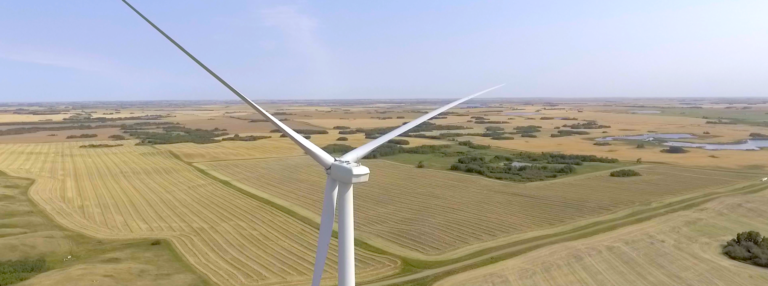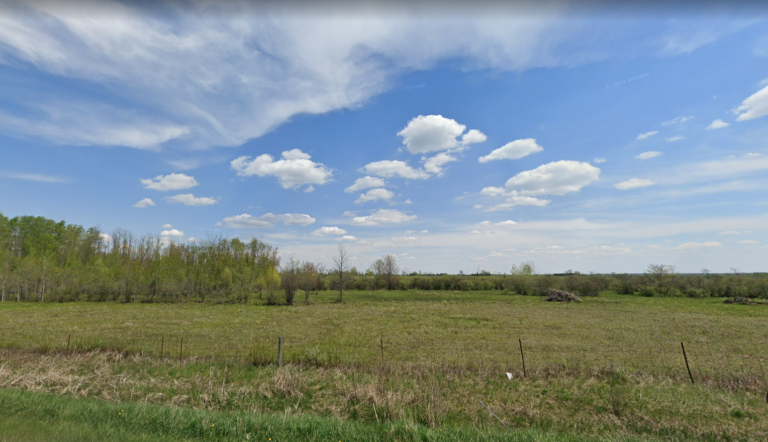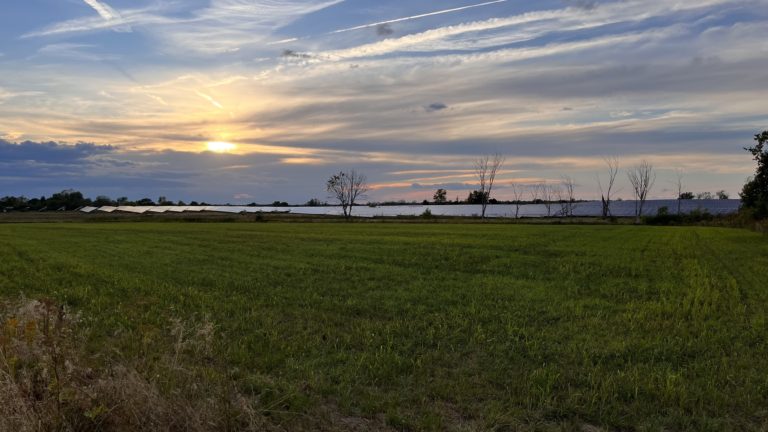Project Location
The Seaforth Storage Project is proposed on approximately 25 acres in the Municipality of Huron East, approximately 4 km from the Town of Seaforth.
Project Development
With decades of experience, we have a team of internal experts to take projects from conception and make them a reality. Our team works in close consultation with government agencies and key stakeholders to site, build and operate our facilities responsibly. To learn more about our approach to project development, click here.
In November 2022 and September 2023, we hosted community meetings for the public to learn more about the proposed Seaforth Storage Project and meet our team. The materials presented at these meetings can be found below. The Seaforth Storage Project was originally proposed with a nameplate capacity of up to 150 MW, however after receiving a capacity study from the transmission provider the maximum project capacity has been increased to up to 200 MW. Additional studies are still required to understand site constraints, which will further influence the proposed project size.
Thank you to everyone who attended our Public Community Meeting on September 6, 2023. All materials presented at this meeting and the Q&A summary can be found in the ‘Additional Resources’ section below.
We are committed to engaging stakeholders in the decision-making process for the project. We believe that trust is the foundation for long-term successful relationships, and we know that trust is only earned over time, by working together with honest and transparent communications.
For more information on the Seaforth Storage Project, please email us at projects@bluearth.ca or call 1-844-214-2578.
Additional Resources
Frequently Asked Questions
Energy storage is the concept of capturing and retaining energy at one point in time, so that it can be used at another point in time.
The most common forms of energy storage technologies are battery, pumped hydro, compressed air, and flywheel. Batteries, specifically lithium batteries, represent the most scalable form of energy storage technology because they can be installed nearly anywhere, have a small footprint, and are relatively inexpensive.
Energy storage helps balance supply and demand on the electrical grid and can provide the following benefits:
- Cost Savings: Increases the efficiency and capabilities of existing electricity generation and transmission networks.
- Reliability: Provides backup power during grid disruptions and other emergencies.
- Flexibility: Energy storage can inject or extract electricity from the grid to exactly match demand patterns. This pairs well with renewable generation sources such as wind and solar.
- Lower Environmental Impacts: Relying on energy storage to regulate the electrical grid allows all generating facilities to operate more efficiently, which can reduce fuel consumption from conventional gas fired facilities.
Batteries used in energy storage last approximately 20 years, or 6,000 cycles of charging. As the battery ages, the performance will gradually decline with time and based on the frequency in which it charges. As batteries age, their storage capacity decreases, similar to batteries used in everyday electronics such as your smartphone. To compensate for this aging process, batteries can be replaced or additional batteries can be added to maintain overall storage capacity.
Once the storage facility has reached the end of its usable life, the facility will be decommissioned. Decommissioning includes de-energizing the facility, removing all above ground equipment and structures, and restoring the land to its prior condition. At the end of a battery’s useful life, up to 95% of the battery can be recycled for use in new batteries. Many of the metals used in batteries hold their value beyond the life of the battery, and these recycled metals can be re-sold at prices that are beginning to compete with metal from mining operations.
This site was primarily chosen because of its proximity to existing transmission line infrastructure, as well as the absence of any significant environmental features or wildlife habitat that would be impacted by the construction, operation, and decommissioning of the project.
There are several reasons why this location was chosen including existing relationships with the local community and landowners, a landowner willing to lease property, and the proximity to existing infrastructure, such as transmission lines and roads. The Project area also does not include any environmental features or habitats that would be impacted by the construction, operation, and decommissioning of the Project.
We will be completing an agricultural impact assessment by an experienced third party to fully understand the potential impacts to agricultural land and inform the mitigation and protection measures that will be implemented to ensure that the long-term agricultural viability of the land is not impacted by the project.
Most importantly, the owner of the land where the Project will be sited, is aware that the site is located on prime agricultural land and has expressed no concerns with farming the land post-restoration. The Project will also provide revenue stability and diversification throughout the life of the Project.
We expect the footprint of the Project will occupy approximately 25-30 acres, assuming a 200 MW capacity.
No, this project is a standalone facility with no connection to our St. Columban Wind Facility in Huron County.
It is important to understand that energy storage batteries are solid state materials. In addition, the battery storage containers are waterproof, so in the unlikely event of a leak from the cooling system, the liquid would be contained in the container. Further, each container is independent so any leak will be limited to the specific container.
The risk of fires occurring with Lithium Iron Phosphate (LFP) technology is significantly less than other technologies. The battery explosion events that you may have heard or read about in the news are associated with Lithium-ion Nickel Manganese Cobalt (NMC) batteries. Lithium Iron Phosphate (LFP) batteries, unlike Lithium-ion NMC batteries, have a structurally stable chemical composition that greatly minimizes the risk of an explosion or thermal runaway event occurring at the project.
The battery system that BluEarth will use for the Project will be equipped with an advanced thermal management system that effectively regulates the temperature of the batteries and prevents overheating, which ultimately will protect against thermal runaway events. Each battery container will also be equipped with a thoroughly designed fire detection and ventilation system. Lastly, the battery technology will be fully tested and certified in accordance with all applicable safety regulations and codes pertaining to battery storage.
In the event of a fire, emergency services would be called and would focus on preventative measures to ensure nothing else is impacted. All of our facilities have a site-specific emergency response plan to ensure we are prepared to respond to incidents such as a fire.
Yes. We recognize that this is new technology in the region and will be working together with the local fire department, the BESS manufacturer, as well as a third party experienced in air dispersion modelling and fire response in developing our Emergency Response Plan (ERP) measures, as well to obtain feedback on the overall design of our facility. The local fire department will have numerous opportunities to review our site plan and provide feedback in terms of emergency response measures, routes, points of contact, etc. and we will be providing training and resources to the local fire department, based on the resource/knowledge needs identified through our direct consultation with the local fire department.
The Project will undertake the necessary measures to avoid stray voltage by hiring qualified contractors that adhere to the standard utility practices and stringent design and inspection requirements of the Ontario Electrical Safety Authority (ESA).
Stray voltage is related to transmission of electricity; not the production/generation of electricity. Causes of stray voltage can include:
- Poor grounding practices or conditions;
- Improper or inadequate wiring;
- Breakdown of insulation in old wires or electrical loads; and
- Dirty, dusty, corroded or damaged electrical boxes and devices.
Liability for stray voltage falls on the utility or electrician responsible for the improper wiring or distribution of power. If complaints are received about stray voltage after the Project is constructed, the Project will consult with the contractor responsible for the installation and determine the appropriate next steps.
Minimizing and mitigating potential stormwater impacts are top of mind for BluEarth and we are planning to complete geotechnical and hydrology studies in the project area to better understand the existing conditions and potential impacts associated with project activities. The results of these studies will be used to inform the overall design of the facility, including the development of a Stormwater Management Plan (SMP).
The stormwater management, erosion, and sediment control mitigations included within the SMP will also be incorporated into the Environmental Protection Plan (EPP) for the project. The EPP will ensure that all potential impacts are appropriately mitigated throughout all phases of the project, including ensuring that adjacent properties are not impacted by runoff from the proposed project site. BluEarth will also be seeking an Environmental Compliance Approval from the Ministry of Environment and Parks (MECP) for potential impacts to stormwater management systems.
The noise emissions produced by the project will depend on the battery technology selected, as well as the associated supporting infrastructure that will produce noise (i.e. inverter and transformer). The sound received at surrounding receptors will depend on the layout of the Project and where the noise emitting infrastructure is sited. As a battery technology has not been selected for the Project and a preliminary layout has not yet been developed, it is difficult to comment on the predicted sound levels produced by the facility at this point in time.
However, the Project will comply with the provincial noise regulations, which set forth a nighttime sound limit of 40 dBA at nearby receptors. For reference, 40 dBA is comparable to a library environment. A typical conversation registers at 60 dBa. BluEarth will file the noise modelling results associated with the final layout to the Ministry of Environment, Conservation and Parks (MECP) as part of the Environmental Activity and Sector Registry (EASR) permitting approval process to demonstrate compliance with the provincial requirements. All noise modelling for the project will be completed by a reputable and experienced third-party consultant.
The noise modelling that we complete for the project includes conservative assumptions to ensure we are within the limits prescribed by the provincial regulations. This includes noise from all BESS facility components including the HVAC, transformer, etc. If our project is found to emit noise that falls outside of the provincial noise limits, we will not be allowed to operate our facility. Thus, it is in our best interest to include conservative assumptions and mitigations within our pre-construction modelling.
The IESO battery storage contract is for 21 years; therefore, the expected lifespan of this BESS facility is 21 years.
No, the approval process has only just begun and there are many more steps that need to be taken and approvals that need to be obtained for the project to built.
We acknowledge that we are engaging with stakeholders very early in the development process and that we don’t have all the answers, which can be frustrating for the community. We are here to try and understand concerns from the community, share information, as be as transparent as possible, so that we can proactively address concerns and incorporate feedback from the community into the overall development of the Project.
Lighting for the facility will be minimal and limited to nighttime usage for the purposes of safety and emergency maintenance. The lighting will be motion activated and will only turn on when there are individuals present on site.




